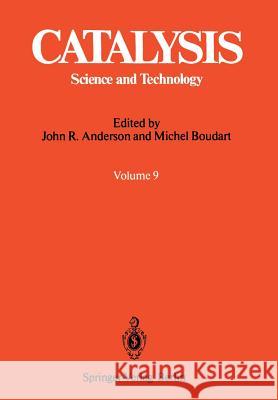Catalysis: Science and Technology » książka
Catalysis: Science and Technology
ISBN-13: 9783642759581 / Angielski / Miękka / 2011 / 190 str.
Our understanding of catalytic reactions exists at various levels which are mainly defined from detailed knowledge of reaction mechanism. When viewed in terms of the stoi chiometric reaction equation, most catalytic reactions are complex processes which occur via a sequence of elementary (i. e. irreducible) steps, and the elucidation ofthese elementary steps and the identification of a rate determining step (if one exists) constitutes the traditional approach to the problem of mechanism. The term "traditional" is not used here in a pejorative sense since mechanistic knowledge of this sort makes an important contribution to catalyst design, improvement, and optimization. This is the field which is discussed by Professor R. L. Burwell in Chapter 1 where the very wide range of useful approaches and techniques is made apparent, even when one is restricted to quasi-steady state conditions. Techniques which depend on observations under non steady state conditions (i. e. relaxation methods) have also been used in mechanistic studies, increasingly so in recent years. This topic is discussed in detail by Professor K. Tamaru in Chapter 2. At a deeper level of understanding, one may seek to enquire how an elementary reaction proceeds in terms of movement in a multicoordinate space where the variables define atomic positions and energy. This is a problem of great complexity even in relatively simple cases. Nevertheless, despite the problems some progress is being made, and this and allied topics are discussed in Chapter 3 by Professor G. L. Haller and Dr. G. W. Coulston."











